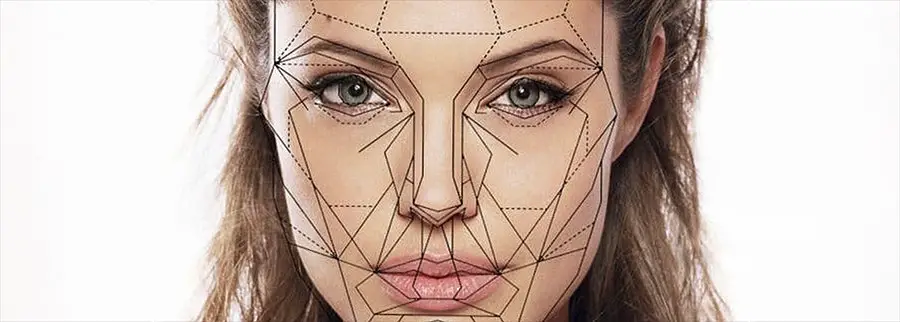
The human face has several golden ratios that play a role in attractiveness. The golden ratio helps us understand our facial features and defines the ideal proportions of the face. Here, we explore several ways to find the golden ratio.
There are three main ways to determine the golden ratio of your face: (1) PhiMatrix, (2) Manual Photo Measurements, and (3) Manual Tape Measurements. All of them measure the face’s golden ratio differently.
The golden ratio is a mathematical ratio used to create balance and beauty in a picture. You can find it in nature, paintings, architecture, and the human face. Phi, the 21st letter of the Greek alphabet, symbolizes (φ) the golden ratio.
History has shown that using the golden ratio can enhance beauty. Sen et al. (2008) believed that Leonardo Da Vinci consciously applied the golden ratio to the human face. This creation was the face of the Mona Lisa. Ancient Greeks also believed that beauty is embodied by a Golden Ratio of 1:1.618.
Dividing a line into two parts will help you find the golden ratio. Dividing the longer part by the smaller part gives the same value as dividing the whole length by the longer part. This relationship is the core behind the Fibonacci sequence. Scientists propose several ways to use the golden ratio to evaluate the human face.
Also, consider our premium-level custom facial report, which measures 50 golden ratios in your face.
PhiMatrix
PhiMatrix provides a golden ratio analysis using the twelve golden ratios for facial beauty. It’s a software that allows you to draw golden rectangles, golden circles, and Fibonacci spirals onto any surface that you’re working on, such as a photo.
Pallett et al. (2010) described twelve golden ratios based on several vital facial markers. According to the findings, the human face’s golden ratio and beauty proportions are as follows:
| Vertical golden ratios | |
| White | Hairline: Eyebrow Top: Eye top |
| Gold | Eyebrow top: Eyebrow bottom: Eye top: Eye bottom |
| Blue | Eye pupil: Top of nasal alar: Nose bottom |
| Green | Eye pupil: Nose bottom: Mouth |
| Green | Eye pupil: Nose bottom: Chin |
| Green | Eye pupil: Mouth: Chin |
| Horizontal golden ratios | |
| Gold | Face side: Eyebrows: Face side |
| Gold | Face side: Medial Eye Canthus: Face side |
| Gold | Face side: Nose width: Face side |
| White | Face side: Eye outside: Nose center |
| Blue | Eye outside: Eye inside: Nose center |
| Green | Mouth outside: Lip cupid’s bow: Mouth outside |
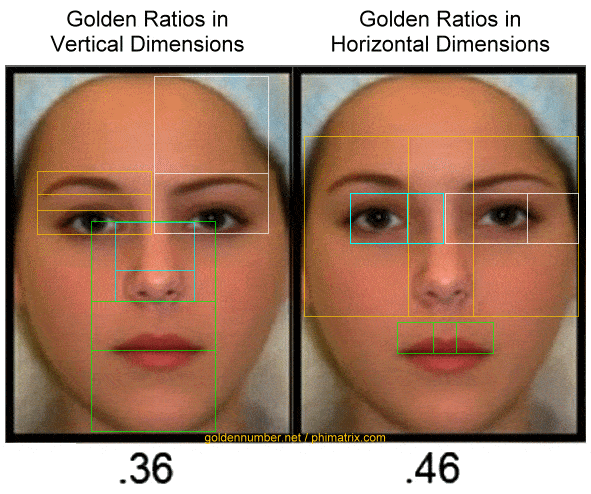
This study provided good evidence for the validity of the golden ratio in the human face.
Photo Analysis
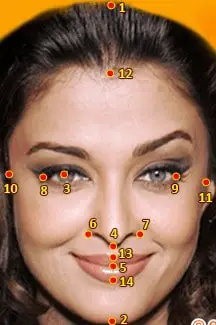
Take a photo similar to the above. Go into Photoshop or another photo editing program and mark these key points. You can use the ruler tool in photoshop to measure the distance between them. We can measure seven ratios of the face.
- Top-of-head (1) to chin (2) VS width of the head (10 to 11)
- Top-of-head (1) to the pupil (3) VS pupil (3) to the lip (5)
- Nose tip (4) to chin (2) VS Lips (5) to the chin (2)
- Nose tip (4) to the chin (2) VS pupil (3) to nose tip (4)
- Width of the nose (6 to 7) VS Nose tip (4) to lips (5)
- Outside distance between eyes (8 to 9) VS Hairline (12) to the pupil (3)
- Length of lips (13 to 14) VS width of nose (6 to 7)
The closer each ratio gets to 1.618, the more ideal it is. But this is only recommended as a guide to understanding facial features. Your results won’t necessarily be accurate.
Manual Measurement
World-renowned artists such as Leonardo Da Vinci and Botticelli used the golden ratio to create masterpieces. Scientists then adopted this ratio to explain why some people have a well-proportioned face that looks beautiful. You can take a tape measure or a ruler and find out for yourself whether you fit some of these ratios.
An assistant professor of biostatistics named Dr. Kendra Schmid uses the golden ratio to study sex appeal based on facial appearance. These measurements determine a person’s beauty on a scale of 1 to 10, 10 being the most beautiful. Here are the steps for how she computes this unique number:
- First, measure the length and width of the face. Then, divide the length by the width. The ideal result, as defined by the golden ratio, is 1.6. A person’s face is about one and a half times longer than its width.
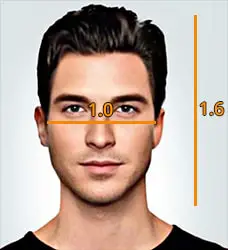
- Measure the length of the forehead hairline to a spot between the eyes. Do the same for between the eyes to the bottom of the nose. Then measure the bottom of the nose to the bottom of the chin. These are the facial thirds. A person’s face is considered more harmonious if all the numbers are equal.
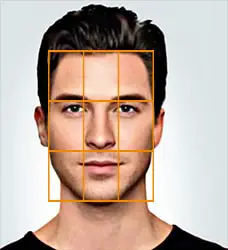
- Scientists measure other features to evaluate facial proportions. The length of the ear is ideally equal to the length of the nose. The width of an eye is ideally the same as the distance between the eyes.
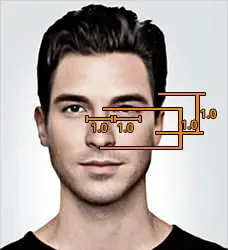
So How Can We Keep Up with the Golden Ratio?
Without a doubt, certain facial features expand (get worse) with age. One example of this is the distance between the mouth and nose. Even faces previously considered to be symmetrical will depart from the golden ratio due to aging. Furthermore, facial fat around the eyes, cheekbones, and jawlines disappear. This process allows the face to lose volume and makes it appear sunken.
- Botox, lip augmentation, and FDA-approved dermal fillers can enhance, rejuvenate, and maintain facial proportions.
- Dermal fillers can enhance the width of the cheekbones. This option works best for long and narrow faces. If the lower face is too short, extending the jawline can improve the proportions of the chin. Dermal fillers are also used for lip augmentation to reduce the height of the facial middle third.
- Botulinum toxin, such as Botox, is an excellent option to raise or lower the eyebrows. It is commonly applied to faces with raised foreheads.
Conclusion
Indeed, there are a few ways to determine the golden ratio. The golden ratio of 1.618 can be used to find the ideal proportions of a person’s unique face to help in aesthetic enhancement. It can also be used to explore the various factors not immediately apparent to us, such as that of facial harmony. But it is important to remember that the golden ratio only reflects mathematical beauty. Perceptions of beauty are also dependent on the person beholding said beauty.

